The third unusual fruit I ordered some weeks ago is a cornelian cherry tree.
Not a real cherry, but a dogwood relative, cornelian cherry (Cornus mas), offers appeal year-round. In the winter, enjoy its beautiful, patchy bark.
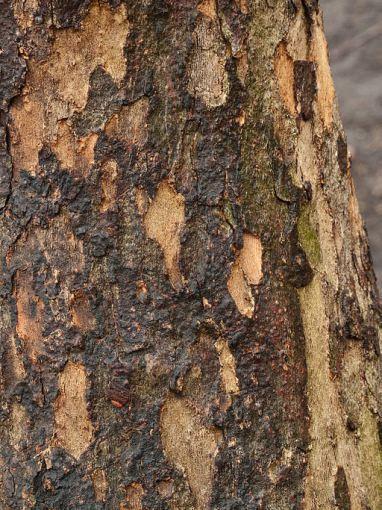
Bark of Cornus mas by Downtowngal (Own work) [CC-BY-SA-3.0 (http://creativecommons.org/licenses/by-sa/3.0)%5D, via Wikimedia Commons.
In late winter or early spring, before it leafs out, bright yellow flowers cover the plant. These beautiful flowers often precede forsythia bloom.
Cornus mas, Paris, France, 13 march 2005. Source: Bouba, (http://commons.wikimedia.org/wiki/User:Bouba), via Creative Commons {{cc-by-sa}}
In summer, Cornus mas produces olive-sized fruits. Astringent until fully ripe, their flavor has been compared to sour cherries, cranberries, and interestingly, carnations. Cornus mas is native to the southern and eastern Mediterranean, and its fruits are frequently used in Persian and Eastern European cooking. Often made into liqueurs, jams, and sauces, the fruits contain high amounts of vitamin C.
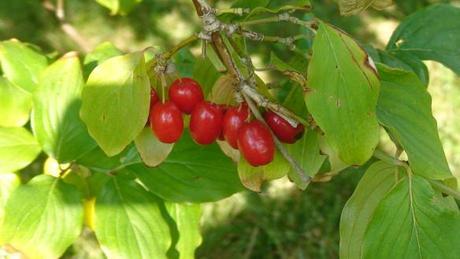
Fruits of cornelian cherry (Cornus mas) by CarTick at English Wikipedia (http://en.wikipedia.org/wiki/User:CarTick) via Creative Commons Attribution-Share Alike 3.0 Unported license.
The plants grow well in full sun or partial shade, reaching 20 feet tall in 25 years, and are hardy to USDA Zone 4. For best fruit production, site the plants in full sun and improve the soil with mulches of compost, and plant another variety close by to improve pollination (the plants are self-fertile). Unlike many fruiting plants, cornelian cherries are largely free of pest and disease problems, and do not suffer with anthracnose or powdery mildew like their cousin Cornus florida. And in autumn, their foliage turns a stunning scarlet.
When it arrived at my home, it did not look like much:
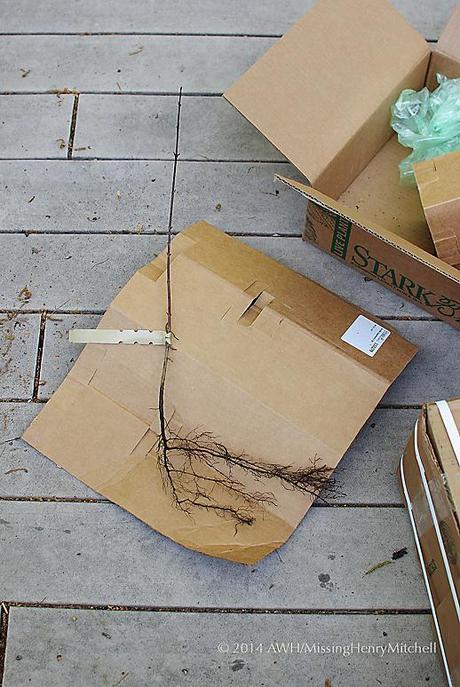
The mighty Cornus mas, fresh from its wrappings.
It came wrapped in plastic, its root ball embedded in damp shredded paper to keep it moist. I immediately gave it a soak in a pail of water to which I’d added a tablespoon or so of liquid seaweed.
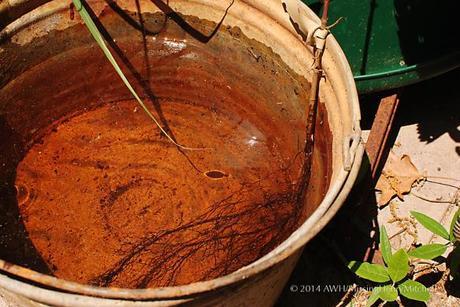
Soaking bare-root plants overnight helps to refresh the roots and get the plant ready for installation.
I planted it promptly the next day, spreading out the roots over a small hill of compost mixed with the native soil in the planting hole. I firmed it in, watered it with the brew in which it had soaked the night before, and mulched well with old wood chips.
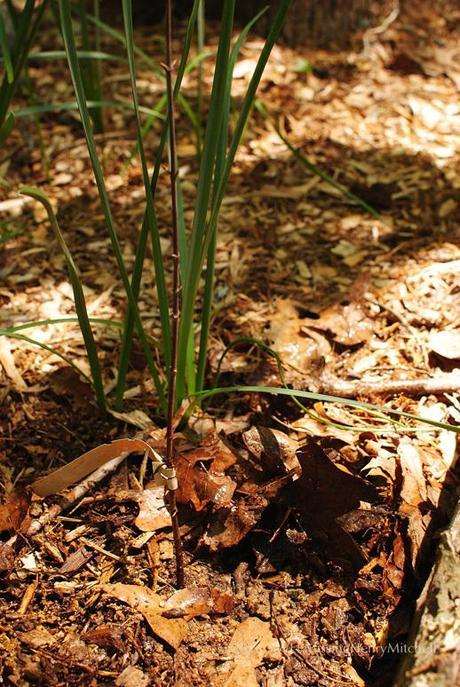
All planted up amongst some pale yellow daffodils. Can you even see it?
It will probably be two years before I see any fruit at all, but perhaps I can enjoy my lingonberries and honeyberries in the meanwhile.
Read more about cornelian cherries and their culture:
- Cornelian cherries, Cornell University
- Growing uncommon fruit: Cornelian cherries, from Carandale Farm and University of Wisconsin-Madison CIAS

